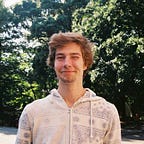Global Art for Connected World
Where is art nowadays?
Art is in museums, of course. It is in Tokyo National Museum and it’s new state-of-the-art digital reproduction of the long time destroyed Azuchi castle one can discover down to the smaller details using a joystick. It is also in the Battló House in Barcelona designed by Gaudi, which now offers a visit using virtual reality to immerse the visitors into the imaginary world of the architect. Or again in the Electronic Language International Festival in Sao Paulo, where one can literally enter Van Gogh’s paintings using VR glasses.
Art is also in the streets of the world. Famous for his works around New York, the British street artist Banksy has painted the walls of many more cities. In Calais (France) for example he realized several murals meant to raise consciousness about the refugees situation on the Calais Jungle. On the same note, the Chinese artist and activist Ai Weiwei made an installation in Berlin using life jackets, important symbols of the deadly journey undertaken by Syrian refugees fleeing their country in war.
Other street artists like Eduardo Kobra, Victor Ash, ROA among others are exhibiting their works in so many big cities on Earth. Kobra for example realized the largest mural created by one artist in which he depicts with his very distinctive style natives of each continent of our planet. ROA goes around the world and paints dead or alive local fauna of the areas he is in. Meanwhile also Space Invaders keep conquering the world.
Cities are not the only ones to benefit of the global artists’ attention. Thanks to the inspired push of the Setouchi Triennale, the small islands of Teshima or Honjima, among others, have hosted this year amazing art pieces one could discover walking or biking around the nature and the small towns of the islands. Let’s mention especially the play with darkness and light of Kayako Nakashima in Takamijima, the bridge between past and future made by Chiharu Shiota, and my favorite piece of the festival, La Forêt des Murmures (The Forest of the Whispers) by Christian Boltanski in Teshima (picture on top of the story). Set in the middle of a forest, this last installation, offers a very particular moment in-between dimensions, sitting on a bench or walking around the sounds of the bells, of the branches swinging by the wind and of the birds.
Art those days is all over the place, from the human-made and now gone “Jungle” of Calais to the eternal forest of Teshima. Artists have always been free agents of the world, but nowadays more and more they are truly global. And now global almost always mean somewhere up there on the web. It can be through tourists uploading memories of their trip, through museums digitizing some of their art pieces, through artists keeping track of their work on their websites or selling it…
Internet is also a mean for engaged artists as well as for whistle blowers or opposition politicians to bypass, to a certain extent, the censure-ship and repression of their home country. Ai Weiwei for example was able to communicate via email when he was confined in China. His exhibition in Alcatraz in 2014 in which he depicts prisoners of conscience and political refugees using Legos makes us think about the dangers of national constraints and how our globalized world and its internet platform can resist them.
Our mindsets are becoming more and more global, concerned about Syria, about American elections, about terrorist attacks, about Brexit, about the rise of China and Africa coming behind, and art is responsive to that. Whether engaged on current issues or on latent socio-economico-political problems, or whether disconnected from world events but touching our post-modern sensibility and sense of aesthetics, art often no longer has borders. Art online echoes this global desire to access digitally what we cannot go to physically.
Art is also more and more often meant for being digital: many digital artists are working with pixels rather than brushes and many photographers are posting their work online rather than in an exhibition room. This way of communicating art is free/cheap, made accessible for everyone around the world, easier to interact with… Instagram for example has become a platform for many artists to expose their talent. Hatecopy, aka Maria Qamar, a Pakistani-born-Canadian-based artist, illustrates with humor the Desi (South Asian diaspora) community culture and social stigmas in a style assuredly inspired by pop art artist Roy Lichtenstein but made her own.
On another vein, the Chinese photographer Ren Hang (renhangrenhang on Instagram) is particularly interested in the beauty of (generally) naked bodies which he photographs alone, in groups, indoors, outdoors … His particular style, sometimes erotic, other times disturbing, is stripped off from the taboos of depicting sexual organs and fantasies. The result may shock, but also make us think about the blunt beauty of our bodies.
New and evolving technologies and online possibilities are allowing artists and curators to create myriads of new experiences — some available only in a particular place on earth and some completely immaterial we can see on our phone while commuting. Not only is art more available globally, but with technologies the borders of art themselves are broadening. Art can be found though the video-gaming experience, on social media, on new forms of digital literature…
If you are interested in meeting and listening to those artists broadening the concept of art, 美: A Series of Creative Talks, a team of UTokyo students I am part of, is organizing an talk on Art and Technology on December 8th (2016). More information about it here.
